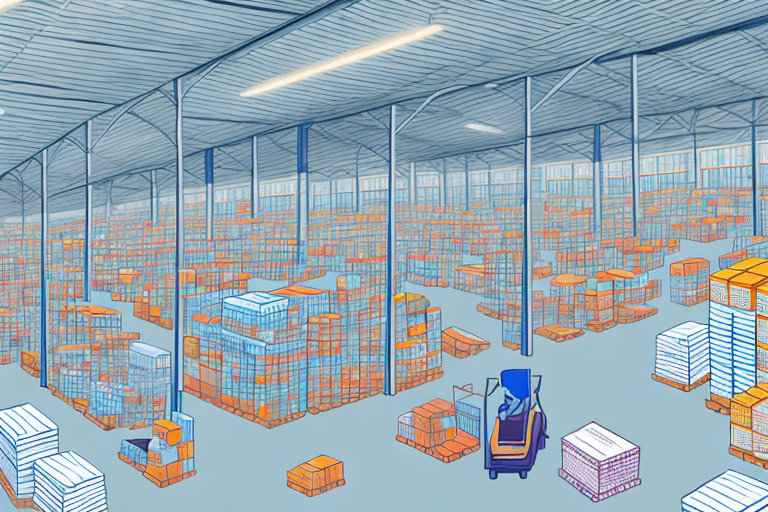Understanding Amazon's Return Policy
Returns are an integral part of Amazon's customer-centric approach. Amazon offers a straightforward return policy that allows customers to return most items within 30 days of receipt. Reasons for returns include receiving defective items, changing one's mind, or dissatisfaction with the product.
Eligibility and Timeframes
Most products sold on Amazon can be returned within 30 days. However, specific categories such as electronics, clothing, and hazardous materials may have different return windows and eligibility criteria. It's essential to review the Amazon Return Policy for detailed information.
Non-Returnable Items
Certain items are non-returnable due to their nature or regulatory restrictions. These include perishable goods, downloadable software, and personalized items. Always check the product listing to confirm if an item is eligible for return.
Amazon's Reverse Logistics System
Amazon's reverse logistics system is a complex network designed to efficiently handle returned products. This system involves several stages, including inspection, sorting, and determining the item's next steps based on its condition.
Sorting and Inspection
Upon receiving a returned item, Amazon conducts a thorough inspection to assess its condition. Items are categorized as "sellable," "refurbishable," or "unsellable." This classification determines whether the product can be resold, refurbished, or recycled.
Restocking, Reselling, or Recycling
Sellable items are returned to inventory and made available for resale. Refurbishable items undergo necessary repairs or cleaning before being sold as certified refurbished products. Unsellable items are either recycled or disposed of responsibly, aligning with Amazon's sustainability goals.
Financial Implications of Returns for Amazon
Handling returns incurs significant costs for Amazon, including shipping expenses and processing fees. However, the company employs various strategies to mitigate these financial burdens.
Shipping Costs and Liquidation Partnerships
Amazon absorbs the cost of shipping returned items back to its facilities. To recover some of these expenses, Amazon partners with liquidation companies to sell returned products in bulk, reducing the financial impact of individual returns.
Data Analytics to Reduce Returns
By analyzing return data, Amazon identifies patterns and common issues leading to returns. This information helps improve product descriptions, enhance quality control, and refine recommendations, ultimately reducing the return rate. According to a Forbes report, data-driven approaches can decrease return rates by up to 20%.
Technology and Innovation in Handling Returns
Amazon leverages advanced technology to streamline its returns process, enhancing efficiency and accuracy.
Automation and Artificial Intelligence
Amazon utilizes robotic systems and AI algorithms to sort and process returned items swiftly. These technologies reduce human error and expedite the returns process, allowing for quicker turnaround times.
Self-Service Returns Process
Amazon offers a user-friendly online returns portal where customers can initiate and track returns. This self-service model enhances customer convenience and reduces the workload on customer service teams.
Sustainability and Environmental Impact
Amazon is committed to minimizing the environmental footprint of its returns process through various sustainability initiatives.
Frustration-Free Packaging
The Frustration-Free Packaging program aims to reduce packaging waste by using recyclable materials and eliminating excess packaging. This initiative not only benefits the environment but also enhances the customer unboxing experience.
Recycling Initiatives
Amazon partners with recycling organizations to ensure that returned items are disposed of responsibly. Components from unsellable items are recycled, reducing landfill waste and conserving resources.
Alternative Shipping Methods
Exploring sustainable shipping options, Amazon is testing electric vehicles and drone deliveries to lower the carbon footprint of its logistics operations. These innovations contribute to a greener returns process and overall sustainability goals.
Impact of External Factors on Returns
External events, such as the COVID-19 pandemic, have significantly influenced Amazon's returns policy and logistics operations.
COVID-19 Adjustments
During the pandemic, Amazon implemented stricter hygiene protocols in its warehouses, slowing down the returns processing rate. Additionally, certain non-essential items saw temporary return restrictions to prioritize safety and essential operations.
Changing Consumer Behavior
The shift towards online shopping during global events has led to an increase in return volumes. Amazon adapts by scaling its reverse logistics capabilities to handle the heightened demand efficiently.
Future Trends in Amazon's Returns Strategy
Looking ahead, Amazon continues to innovate its returns process to enhance efficiency, customer satisfaction, and sustainability.
Enhanced Automation and AI Integration
Amazon plans to integrate more sophisticated AI models to predict return patterns and automate decision-making processes, further reducing handling times and costs.
Sustainable Practices Expansion
Expanding its recycling and repurposing initiatives, Amazon aims to achieve net-zero carbon emissions by 2040. This includes increasing the use of renewable energy in its logistics operations and promoting circular economy principles in product returns.
Customer Experience Enhancements
Amazon is focused on refining the returns experience by offering more flexible return options, such as scheduled pick-ups and extended return periods, thereby strengthening customer loyalty and satisfaction.
Best Practices for Returning Items on Amazon
To ensure a smooth and hassle-free returns experience, customers should follow these guidelines:
- Review the Return Policy: Before initiating a return, familiarize yourself with Amazon's return guidelines specific to the product category.
- Use Official Return Channels: Always process returns through Amazon's official platform to receive tracking and confirmation.
- Pack Items Securely: Repackage items securely to prevent damage during transit, using original packaging when possible.
- Track Your Return: Utilize Amazon's tracking features to monitor the status of your return and ensure timely refunds.
Conclusion
Amazon's approach to handling returned items is a testament to its commitment to customer satisfaction and operational efficiency. By leveraging advanced technology, data analytics, and sustainable practices, Amazon effectively manages the complexities of reverse logistics. As consumer behavior and global dynamics evolve, Amazon continues to adapt and innovate, ensuring that its returns process remains robust, cost-effective, and environmentally responsible.






















